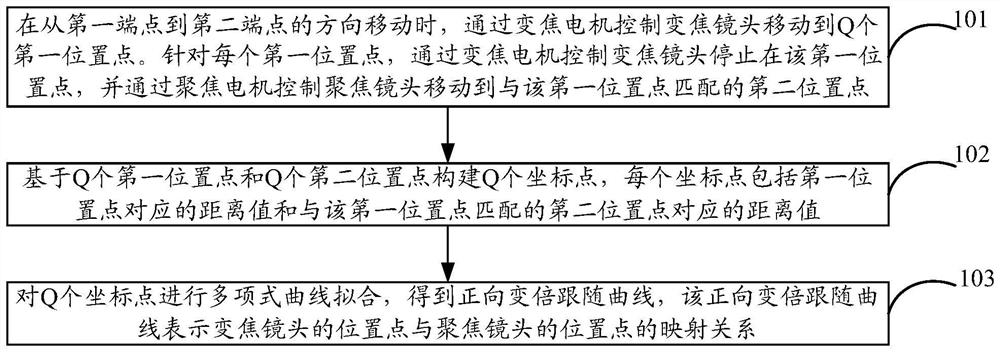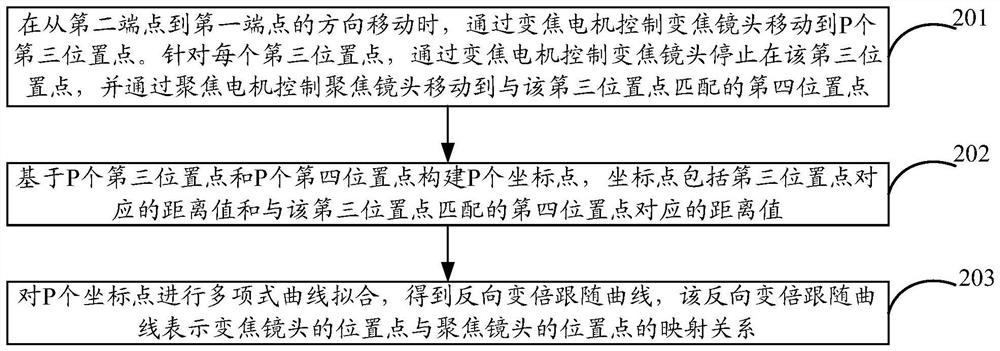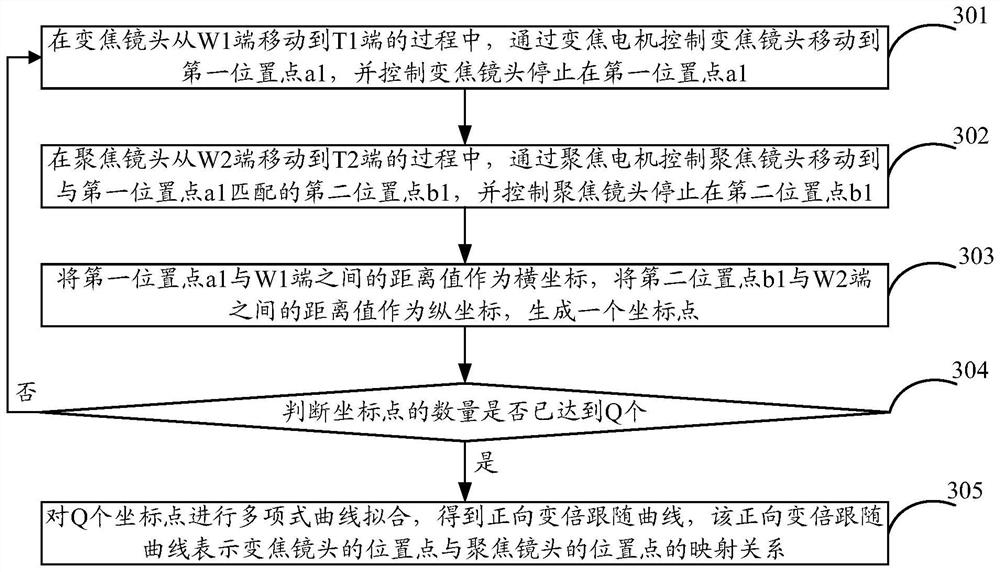Curve determination method, device and equipment
A technology to determine the method and curve, which is applied in the field of image processing, can solve the problems that the zoom follow curve cannot be applied to cameras, poor image clarity, and unclear images, etc., and achieve rapid calibration of the zoom follow curve, solve the problem of unsmooth and image effects Good results
- Summary
- Abstract
- Description
- Claims
- Application Information
AI Technical Summary
Problems solved by technology
Method used
Image
Examples
Embodiment Construction
[0024] The terms used in the embodiments of the present application are only for the purpose of describing specific embodiments, rather than limiting the present application. As used in this application and the claims, the singular forms "a", "the" and "the" are intended to include the plural forms as well, unless the context clearly dictates otherwise. It should also be understood that the term "and / or" as used herein is meant to include any and all possible combinations of one or more of the associated listed items.
[0025] It should be understood that although the embodiments of the present application may use terms such as first, second, and third to describe various information, such information should not be limited to these terms. These terms are only used to distinguish information of the same type from one another. For example, without departing from the scope of the present application, first information may also be called second information, and similarly, second ...
PUM
 Login to View More
Login to View More Abstract
Description
Claims
Application Information
 Login to View More
Login to View More - R&D
- Intellectual Property
- Life Sciences
- Materials
- Tech Scout
- Unparalleled Data Quality
- Higher Quality Content
- 60% Fewer Hallucinations
Browse by: Latest US Patents, China's latest patents, Technical Efficacy Thesaurus, Application Domain, Technology Topic, Popular Technical Reports.
© 2025 PatSnap. All rights reserved.Legal|Privacy policy|Modern Slavery Act Transparency Statement|Sitemap|About US| Contact US: help@patsnap.com



